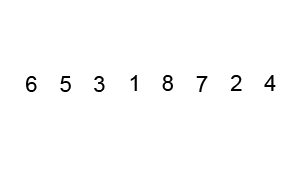python实现常用排序算法
2017-08-03 本文已影响0人
这个手刹丶不太灵
*排序算法
 ordersummary
ordersummary
冒泡排序
原理:比较相邻的元素。如果第一个比第二个大,就交换他们两个。
def buttle_sort(l1):
for i in range(len(l1)-1):
flag = True
for j in range(len(l1)-1-i):
if l1[j] > l1[j+1]:
l1[j],l1[j+1] = l1[j+1],l1[j]
flag = False
if flag:
#某次内层循环没有交换,直接返回list
return l1
return l1
选择排序
原理:将后面的元素最小元素一个个取出然后按顺序放置
def selection_sort(l1):
for i in range(len(l1)):
min = i #最小元素下标
for j in range(i+1,len(l1)):
if l1[j] < l1[min]:
min = j #最小值下标
l1[i],l1[min] = l1[min],l1[i]
return l1
插入排序
原理:插入排序的工作原理是,对于每个未排序数据,在已排序序列中从后向前扫描,找到相应位置并插入。
def insert_sort(l1):
n = len(l1)
for i in range(1,n):
if l1[i] < l1[i-1]:
temp = l1[i]
index = i #待插入下标为index的元素
for j in range(i-1,-1,-1): #从i-1循环到0(包括0)
if l1[j] > temp:
l1[j+1] = l1[j]
index = j #记录待插入下标
else:
break
l1[index] = temp
print('L1~~~~~~~~%s ' % l1)
return l1
希尔排序
原理:将数组列在一个表中并对列分别进行插入排序,重复这过程,不过每次用更长的列(步长更长了,列数更少了)来进行。
最后整个表就只有一列了。将数组转换至表是为了更好地理解这算法,算法本身还是使用数组进行排序。
def shell_sort(ary):
n = len(ary)
#初始步长 , 用round四舍五入取整
gap = round(n/3)
while gap > 0 :
print('gap %s' % gap)
for i in range(gap,n): #每一列进行插入排序 , 从gap 到 n-1
temp = ary[i]
j = i
while ( j >= gap and ary[j-gap] > temp ): #插入排序
ary[j] = ary[j-gap]
j = j - gap
ary[j] = temp
print(ary)
gap = round(gap/3) #重新设置步长
return ary
### 13 14 94 33 82
### 25 59 94 65 23
### 45 27 73 25 39
### 10
l1= [ 13, 14, 94,33 ,82, 25, 59,94, 65, 23, 45, 27, 73, 25, 39, 10 ]
print(shell_sort(l1))
快速排序
原理:



